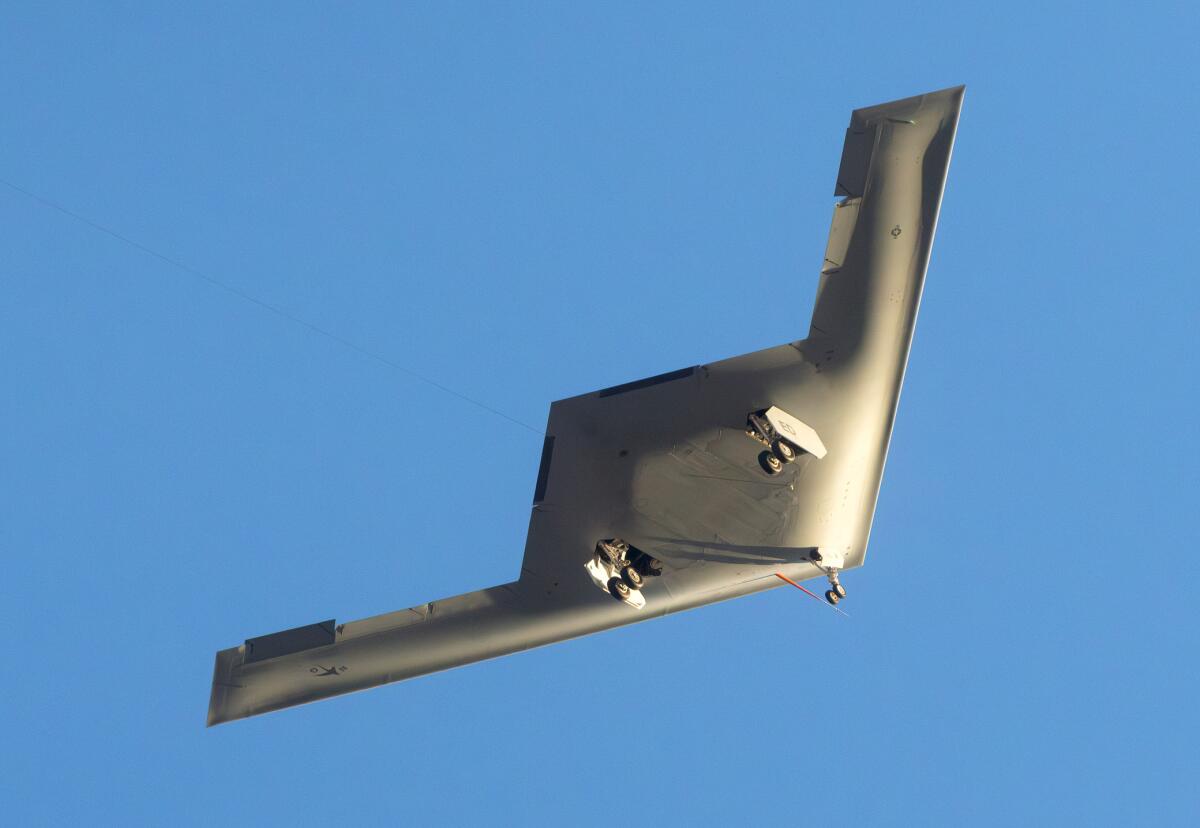The prototype of the future B-21 Raider bomber has just completed its first flight. This event has not gone unnoticed by aviation enthusiasts, who extensively photographed and filmed it. Let’s delve into what these images reveal about its capabilities.
After being revealed in several photos, the future stealth bomber B-21 Raider by Northrop Grumman for the US Air Force has successfully executed its maiden flight. The aviation community is closely analyzing the images of this flight as it headed to Edwards Air Force Base in California, United States, to glean insights into the bomber’s capabilities and characteristics. Setting the tone even before observing the aircraft, the current prototype bears the name “Cerberus” on its front landing gear door, referencing the menacing three-headed dog guarding the underworld in Greek mythology, preventing the dead from returning to life.
During this flight, a noticeable long cable is trailing behind the fuselage, designed to tow what is known as a “cone of influence.” This apparatus collects “static” atmospheric measurements during the flight. The gathered data is then combined with information from the extensive probe positioned at the aircraft’s front left, capturing “dynamic” data. These, along with data from various other sensors, enable a precise evaluation of the aircraft’s behavior during flight and verification of the correct calibration of its instruments.
Regarding its appearance, the B-21 shares a resemblance to the B-2, featuring an elongated and flat profile to maximize stealth. The rear of the aircraft is distinct, terminating in a diamond-shaped structure. The B-21 appears smaller, with an estimated wingspan of around 45 meters, in contrast to the B-2’s approximately 52.5 meters. Its nose, integrated with the leading edge of the wing, adopts a duck-bill shape. Combined with the low position of the side windows, it exudes an aggressive demeanor, aligning with the expected image of such an aircraft.
Intriguing Wings
The unique configuration of the B-21, with two strange horns or pointed ears on either side of the cockpit, has sparked speculation among experts and informed enthusiasts. Contrary to being data sensors for flight tests, these protrusions are retractable fins designed to optimize airflow over the fuselage and engine inlets. Their purpose is to ensure efficient air supply to the engines during takeoff and landing, compensating for the relatively narrow air inlets essential for radar signature reduction. While this design enhances stealth, it poses challenges for engine performance during these phases, hence the presence of these “pointed ears.”
Regarding the engines, due to their deep integration into the fuselage for increased stealth, details such as the number and type remain undisclosed. They are likely smaller than those on the B-2, and there could potentially be four of them. This innovative design aims to balance stealth capabilities with the operational requirements of takeoff and landing phases.
Limited Weapons Carry-on
The focus of attention has been on the B-21’s payload bay. Ground-based images captured by enthusiasts provide a detailed view of its ammunition bay. Given the B-21’s size, it is estimated to have half the payload capacity of the B-2. Consequently, the bomber is likely restricted to carrying a single GBU-57A/B Massive Ordnance Penetrator (MOP)-type missile. However, this weapons bay is likely modular, allowing it to accommodate various modern weapon systems, including drones for collaborative combat missions. The question remains whether the visible hatches near the bay are for carrying additional defensive weapons, such as rockets, or simply provide access for maintenance purposes. Regarding the embedded operational sensors, the current visible aspects of the aircraft do not provide further insight, emphasizing that this Cerberus is still in the prototype stage.
Featured Image: The new B-21 bomber takes its first flight Friday morning, Nov. 10, 2023, in Palmdale, Calif. (Matthew C. Hartman)
